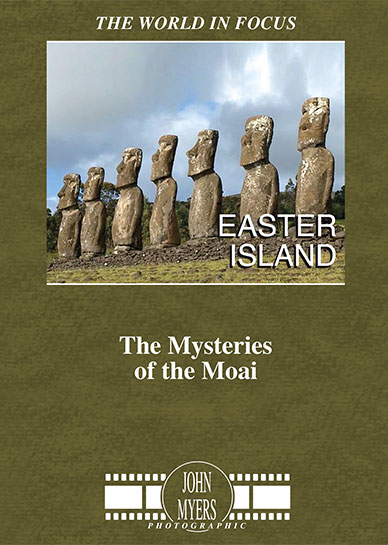Description
Easter Island, or Rapa Nui, is a Polynesian island in the south eastern Pacific Ocean. It is a small island being 25 by 12 kilometres at its widest. It is one of the world’s most isolated inhabited islands. Its nearest neighbour is Pitcairn Island, some 2000 kilometres away to the west. The first European to visit the volcanic island was a Dutch explorer who landed there on Easter Sunday 1722. Easter Island is famous for its 887 monumental statues, called Moai, that were created, carved and erected by the early Rapanui people. It is a World Heritage Site with much of the island protected within the Rapa Nui National Park. European accounts from 1722 and later mention standing Moai, but James Cook’s 1774 expedition noted that several Moai were lying down. It seems that the Moai were toppled during internal wars. Many have been restored during the latter part of the 20th century to their original standing positions on platforms. Easter Island was annexed by Chile on September 9th 1888. Until the 1960s, the surviving Rapanui were confined to the settlement at Hanga Roa. The rest of the island was rented as a sheep farm until 1953. The island was managed by the Chilean Navy until 1966. At that point the rest of the island was re-opened.
This documentary commences with a look at the area in the vicinity of Hanga Roa. Most visitors stay here for a few days and journey out to see the Moai at various locations on the island. One of the high points on the Island is the volcanic crater of Rano Kau, which contains a fresh water lake. Perched 400 metres up on the edge of the crater wall is the ceremonial village of Orongo. This was once the most important site on the island, but is significance seems to belong to a period after the construction of the great statues and ahu, platforms. Rana Raraku is the quarry site, where the Moai statues were cut. The mountain side is littered with statues in all stages of completion. Puna Pau is another quarry, where the cylindrical, red-stone topknots were carved. The native name, for this head decoration is Pukao, which means ‘topknot’ and was the usual hairstyle of Easter Island males. There are some splendid sites where the Moai have been restored to their standing position, most notably at Tongariki. Here there are 15 Moai. There are 7 statues at Ahu Akivi. The documentary ends with a visit to the sandy beach at Anakena, a possible landing place for early settlers.
John Myers Photographic invites you to experience this interesting remote island of Rapa Nui. There are legends and mysteries surrounding the ancient Polynesian culture that pervaded the island. Visiting the sites of Moai and learning something of the history is the main reason for travelling to this interesting island, Easter Island.
Running time is approximately 20 minutes.
Tags: Easter Island, Australasia / Oceania

